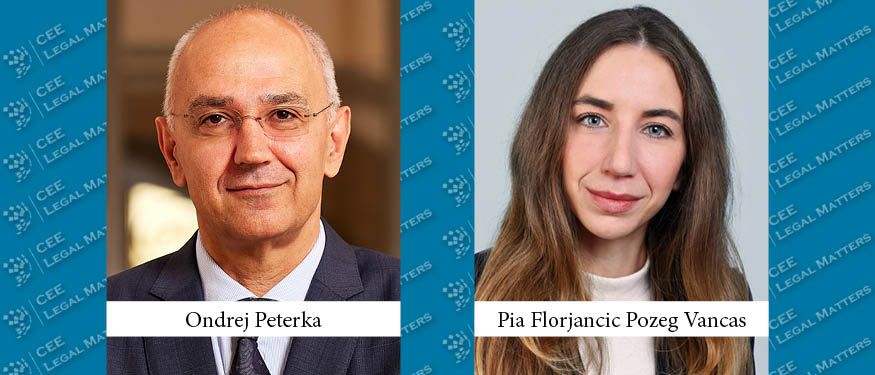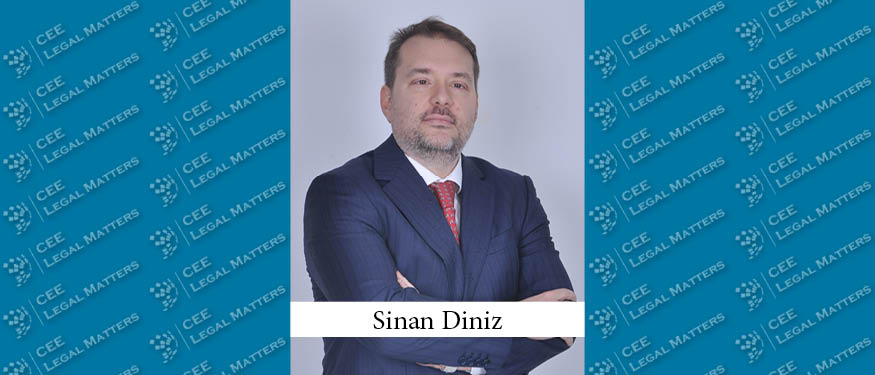Despite concerns over automotive suppliers relocating due to geopolitical tensions, the automotive sector in Slovakia has remained resilient. The sector continues to be the backbone of the economy, with tax revenues and employment surpassing other industries, although challenges do exist. Ruzicka & Partners Managing Partner Jaroslav Ruzicka, Wolf Theiss Counsel and Head of Corporate/M&A Bruno Stefanik, and Cechova & Partners Head of Automotive Practice Michal Simunic take a closer look at the status of the sector.
The Ukrainian Elephant in the Room
Stefanik highlights that at the outbreak of the war in Ukraine, there were concerns that automotive suppliers might consider moving out of Slovakia due to its proximity to the warzone. “However, these concerns have not materialized and the automotive sector has remained strong.” Stefanik further emphasizes that “the automotive sector remains the backbone of the economy and continues to hold strong even as consumer goods and construction materials are stagnating.”
Ruzicka adds that “the automotive sector, worldwide as well as in Slovakia, has been facing unprecedented global challenges. Having survived the COVID-19 waves relatively unharmed, the subsequent raw material and component shortages brought on by the pandemic resulted in a slight decrease in production figures.” Furthermore, Ruzicka feels that “the upcoming EURO 7 standard may pose another challenge and a big question mark as to the preparedness of the automotive sector.” According to him, “although the form in which this standard will be adopted is not entirely clear at this point, the available information suggests that its impact on the competitive ability of European automakers may be seriously damaging and its consequences far-reaching.”
Still a Powerhouse
According to Stefanik, the automotive sector retains its position as the largest sector in terms of tax revenues and employment in both countries. “The automotive industry in Slovakia has long been a pillar of the country’s economy contributing around 13% to GDP, around 54% to industrial production, and made Slovakia the country with the most produced cars per citizen in the world,” Simunic adds. “While the automotive sector has experienced fluctuations, it maintains its position as the largest sector in Slovakia.”
Ruzicka agrees, stating that “the automotive sector is undoubtedly the largest branch of the Slovak economy, sharing around 50% of total industrial production and with a further growth potential in the future.” He goes on to say that, “according to available statistical information, Slovakia is still the largest producer of cars per capita in the world. Four production plants are located in western Slovakia, namely Volkswagen, Stellantis, KIA, and Jaguar Land Rover.” Ruzicka continues to report that, even though the “total volume of production decreased slightly in the past year, the industry as such is benefiting from further growth, primarily as the fifth car maker Volvo Cars is heading to eastern Slovakia with a greenfield investment exceeding EUR 1 billion. Volvo plans to commence the production of fully electric cars in 2026.”
“Nevertheless,” Stefanik notes, “it might well be the case that in the past two years, it has been, or it will be, nominally overtaken by energy and mining because of the steep profits made in those sectors. In the mid to long-term, however, we believe automotive will remain the backbone of the economy.” Moreover, “one of the lessons learned from the COVID-19 pandemic was that the supply chain needs to be shortened significantly. Thus, we expect these factors will drive investment in the automotive sector.”
Burned Pistons
Stefanik says that while liquidity was a major concern during the COVID-19 years, it is no longer at the top of the list. Instead, he reports that “the single biggest concern is the stability of energy prices. Clients are investing in modernizing their energy infrastructure to optimize consumption and costs.” The short-term concern, according to him, is the risk of recession resulting in a decrease in consumption. “The mid to long-term concern is the lack of a qualified workforce. The gap between the supply and the demand of qualified workers is widening and we identify this as a major structural risk,” he explains.
Ruzicka, in addition, points out that “one of the persisting challenges is the shortage of domestic labor force, which automakers and their subcontractors attempt to compensate by the employment of third-country workers. In addition to higher costs, this also means disproportionately long processing times for such employment applications due to insufficient state administrative capacities, leading to slower recruitment times,” he explains.
Simunic agrees, adding that a “rigid migration policy does not allow to attract enough workers from third countries into production.” Moreover, he believes that another major challenge is the “continuation of the ‘green transformation,’ not only in terms of the transition to electric car manufacturing but also in terms of more ecological production.” He feels that the “future of mobility is smart, which will demand significant new and upgraded infrastructure supported by technological companies and strong research and development capacities. All of this requires proper training and education, where Slovakia is currently lagging behind.”
(Lack of) Government Support
Stefanik suggests that the government has not taken any major steps to address the sector’s most significant risks. “While energy prices for business are arguably stabilizing and can be expected to stabilize further without major government intervention, we believe that what the sector needs the most is the long-term, stable availability of a qualified workforce and incentives for innovation,” he explains. “The next government will need to seriously consider educational reform, revising its immigration policies and improving the distribution of public and European Union funds.”
To meet the labor challenge, Ruzicka says that the state does provide extensive educational support. “Thousands of future graduates are undergoing specialized automotive-sector education, currently at seven technical universities and 180 secondary vocational schools with a technical focus. At the same time, they have also acquired practical experience, knowledge, and skills as part of their studies, through the so-called dual education functioning project thanks to the cooperation between the schools and the automotive companies,” he explains. “Even though the support for technical sector-specific education may only start paying off in the medium- to long-term, I see this as an important and significant step in helping the country’s automotive industry thrive and face novel challenges in the future.”
“While the government’s actions have provided relief, continued support and collaboration are necessary,” Simunic chimes in. “Increased investments in infrastructure development, incentives for research and development, and fostering partnerships between academia, industry, and the government are crucial for enhancing the sector’s resilience and competitiveness.”
Ruzicka notes that several Slovak governments in the past failed to rally support for the automotive sector and, instead, relied on the industry to drive growth. Still, he says that the sector “clearly enjoys strong support from the state. This can be especially seen in the initiatives focused on attracting new investments. In the case of Volvo Cars, for instance, the state approved the largest state aid volume provided to an OEM Investor in the country’s history.”
Lastly, Ruzicka points to a need for a more flexible framework that better reflects “the requirements of the automotive industry, as well as streamlining the functioning of the state administration in various permitting and approval processes,”, adding that “it would certainly be welcome.”
This article was originally published in Issue 10.7 of the CEE Legal Matters Magazine. If you would like to receive a hard copy of the magazine, you can subscribe here.

























